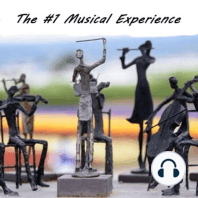97 min listen

The Classic String Ensemble - 1st Movement - Allegro vivace
The Classic String Ensemble - 1st Movement - Allegro vivace
ratings:
Length:
41 minutes
Released:
Jun 4, 2022
Format:
Podcast episode
Description
A string orchestra is an orchestra consisting solely of a string section made up of the bowed strings used in Western Classical music. The instruments of such an orchestra are most often the following: the violin, which is divided into first and second violin players (each usually playing different parts), the viola, the cello, and usually, but not always, the double bass.String orchestras can be of chamber orchestra size ranging from between 12 (4 first violins, 3 second violins, 2 violas, 2 cellos and 1 bass = 12) and 21 musicians (6 first violins, 5 second violins, 4 violas, 4 cellos and 2 double basses= 21) sometimes performing without a conductor. It could also consist of the entire string section of a large symphony orchestra which could have 60 musicians (16 first violins, 14 second violins, 12 violas, 10 cellos and 8 double basses = 6 Get bonus content on Patreon Hosted on Acast. See acast.com/privacy for more information.
Released:
Jun 4, 2022
Format:
Podcast episode
Titles in the series (100)
Baroque Music for All Ages: Why We Should Expose Our Kids To Classical Music https://ourtownlive.net #herbw79The term "baroque" is generally used by music historians to describe a broad range of styles from a wide geographic region, mostly in Europe, composed over a period of... by The #1 Musical Experience